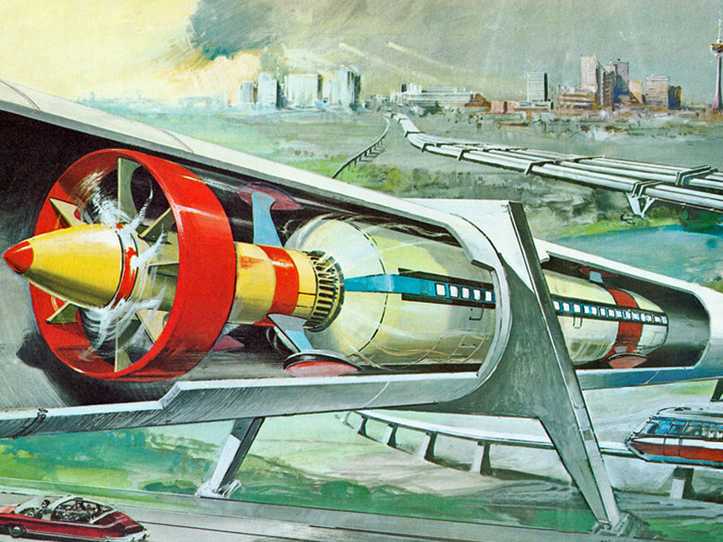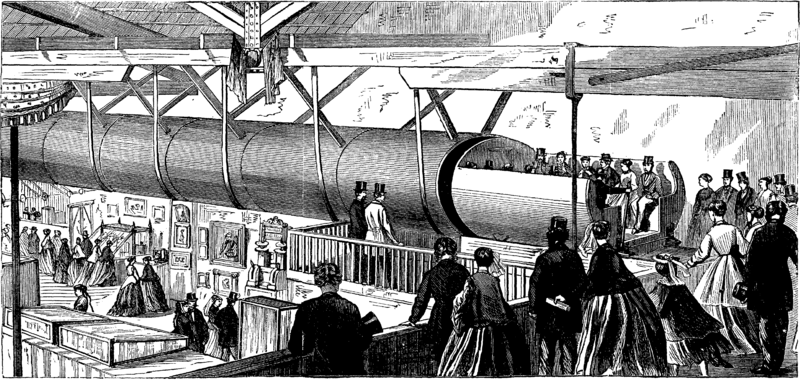
In 2013, Elon Musk proposed the idea of creating a high-speed transport system that can significantly reduce the time that we spend on moving from point A to point B. The reduction is achieved due to the very high speed of movement of passenger capsules - up to 1200 km / h. Well, this speed is supposed to be developed thanks to magnetic levitation and vacuum in the tunnels. They are easiest to lay above the ground, rather than build underground tunnels.
Over the years, many media outlets have been talking about Hyperloop very often, discussing the possible time of the project, its cost, technology and the like. But now the idea of Musk has somehow ceased to be remembered. Does this mean that the project is dead? Let's see.
Who Builds Hyperloop?
To avoid confusion between different projects, it is worth remembering who exactly is implementing the idea. She, by the way, does not belong to Musk. Travel, which travels at the speed of an airplane in tunnels without air, began to be discussed back in the 19th century. Scientific substantiation followed in the 20th century, the idea was repeatedly discussed, but no one dared to try it.

So, immediately after Musk remembered this, he said that he would not patent it in order to give everyone the opportunity to start implementing it. There were a lot of people interested, but two companies got down to business:
Hyperloop Transportation Technologies , a company that calls itself a follower of Musk's idea. It brings together various organizations from all over the world. The project involves scientists, engineers, technologists, developers - about 800 people in total. All this is in most cases free. There is no clear structure in this organization: to what extent it is possible to understand who wants what - that is what they do.
This company has a small research center, but nothing has been heard about it for a couple of years. From time to time, beautiful renders are published, and, in general, that's all.
Virgin Hyperloop - Initially this company was called Hyperloop One, but then Richard Branson invested in it, and it was called Virgin Hyperloop. This is where the activity is noticeable, since the company operates precisely as a commercial organization. The board of directors includes well-known entrepreneurs who previously at various times participated in projects of SpaceX, Tesla, PayPal, etc. For example, here are a couple of names: JumpStartFund co-founder Dirk Ahlborn and SpaceX president Gwynne Shotwell.
What are these companies doing?
Hyperloop Transportation Technologies doesn't have many cases. For the most part, representatives of this organization say something from time to time.
However, recently it became known that the London architectural company Zaha Hadid Architects has signed a cooperation agreement with Hyperloop Italia. The latter is just part of Hyperloop Transportation Technologies.
The Italian company plans to build a route between Milan and Malpensa airport. According to representatives, the track will reduce the travel time from 45 minutes to just 10. The advantage of the track is that it will be relatively small, so that using its example it will be possible to work out the implementation of the Hyperloop concept and see how it all works - both in technological and and economically.

At the moment, little is known about the project. The founder states that the energy will be supplied from alternative sources, and the construction will be carried out using environmentally friendly materials. But these are all words, but there are no publications with information about technologies, cost and other details.
It is known that the company was founded in 2020, and the number of employees does not exceed fifty people. Here is their LinkedIn page .
Actually, this is everything from HTT - they no longer serve any signs of life in the media field. Perhaps the problem is precisely in distributed work and free labor of enthusiasts - there are many ideas, but there is no single guide, who is responsible for what, it is also not clear.
Virgin Hyperloop, on the other hand, is working very actively. This company, backed by Richard Branson, has a lot of events, news and other things.
For example, in November 2020, it was Virgin Hyperloop that first tested a prototype capsule with passengers. At the same time, the passengers were not outsiders, but the chief technical officer of the company Josh Gigel and the director of customer relations Sara Lucian.
The speed of the test capsule in the test tunnel was relatively low - 172 km / h. This is nothing compared to the previously announced 1200 km / h. However, the company continues to build test sites and conduct tests, so work is underway. The capsule with the manual was tested in a 500-meter tunnel. The capsule covered this distance in 15 seconds.
In addition, Virgin Hyperloop is building a research and development facility to explore the capabilities of a new vehicle. Construction is underway in West Virginia, USA. They plan to connect a Hyperloop test branch to the main building, which will help test the system, bringing it to the final version.

The company is trying with all its might to make it a center not only in Virginia, but also in the United States and the whole world. There are plans to create about 13,000 jobs, including IT and engineering positions.
In May of this year, the company announced its intention to launch new vehicles on a commercial basis by 2027. And we are talking about a speed of 1200 km / h. Engineers have modified the batteries, power electronics and a number of capsule sensors - by the way, each of them is designed not for 2 passengers, which we saw in the video above, but for 28 people.
A few days ago, the head of the company gave an extensive interview in which he continues to be optimistic about the future. For example, he statedthat in May 2021 he discussed the company's projects with the Transportation and Infrastructure group of the US Senate. People from the street are not invited to perform here, so one can hope for a relatively early appearance of Hyperloop.
By the way, there are other companies that are researching the technology. For example, in South Korea they even built a mock-up that allowed the test capsule to overcome the speed of 1019 km / h. The scale of the resulting installation is not very large - 1:17, but, nevertheless, everything works.
There is also the Zeleros company from Spain, which received about 7 million euros for the development of its own project, plus Hyper Poland, which was provided with 500 thousand euros. All these are just the beginnings of some serious project, but it may well be that something will shoot.
Optimism is added by experts who predict an increase in the volume of the Hyperloop market to $ 6.6 billion by 2026. The average annual growth rate of the market will be about 40.4%.
Not a cloud ahead?
Not certainly in that way. Hyperloop has been heavily impacted by the coronavirus pandemic, delaying the implementation of several projects. The same India, which was going to build a trial section of the road, abandoned the project because the country had a mountain of problems associated with COVID-19.
In addition, the system is very expensive, projects require billions of US dollars, which not every investor is ready to allocate.
Another challenge is system security. Yes, the head of the company drove along the test track, but at a speed that is almost 10 times less than the calculated one. The web is actively discussing what will happen if the capsule breaks. On the other hand, the world is full of equally dangerous technologies, but they are still used.
But be that as it may, one company is definitely ready to invest in the project and develop the transport infrastructure of Hyperloop. Hopefully, Richard Branson will stick with his plans and see it through to the end, despite the pandemic and other challenges.
